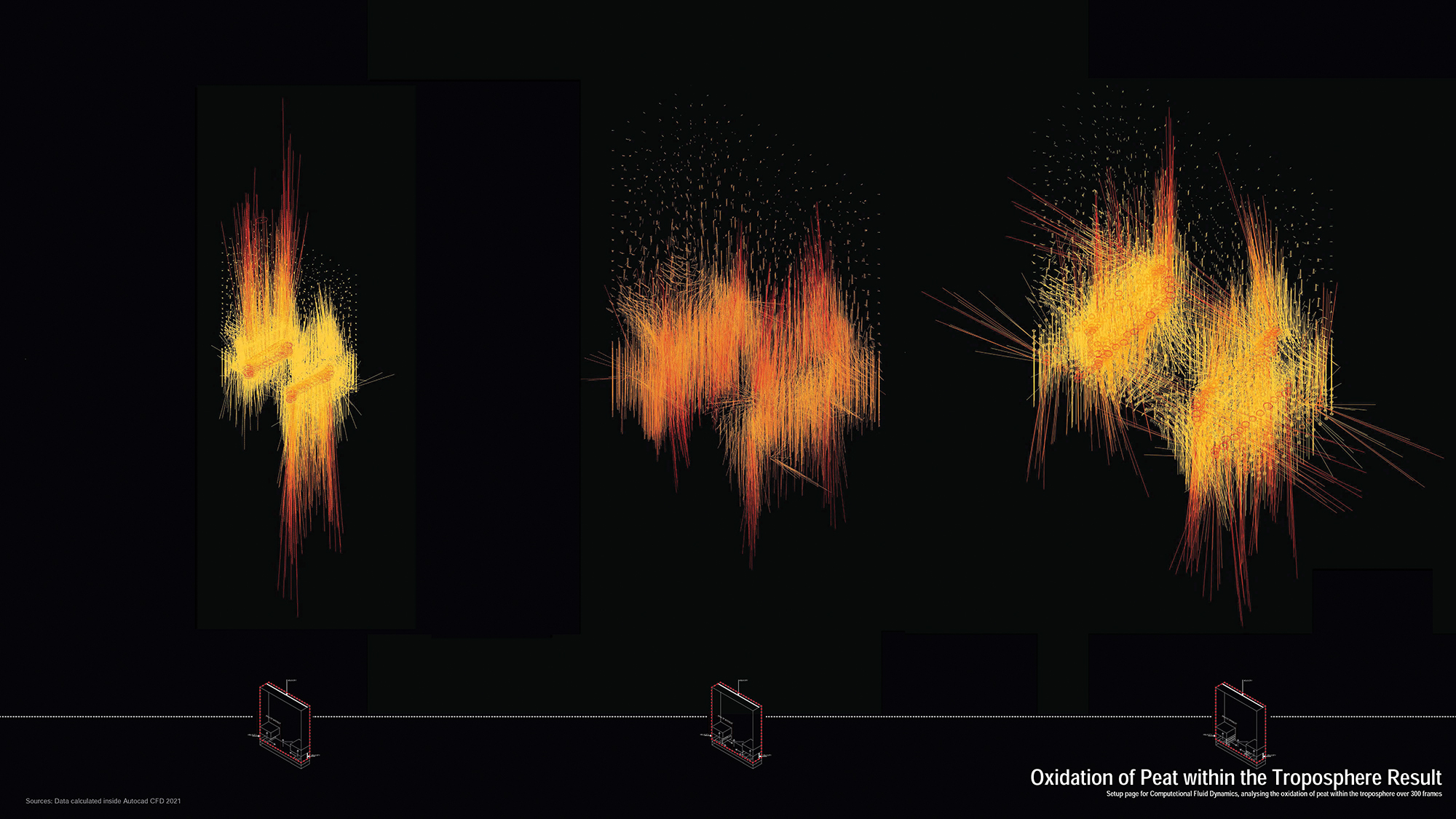Sulman Shaikh Muhammad
Year 2 MArch
Critical Zones of Peat Observation
Carbon Exchange
Market
Dungeness Train Station, UK
Dungeness is known as the only desert in Britain and is expected to disappear in less than 30 years. With the loss of Dungeness due to natural and anthropogenic elements, Dungeness has been an interest to geologists and cli-mate advocates, as a place which needs immediate attention.
Dungeness is a headland on the coast of Kent, England. It is primarily formed by layers of shifting landmass, with clear intervention of human enforcement to conserve the place from natural disasters such as flooding and land shifting. Geological discoveries have led me to an interest in the peat that is present throughout the site. The peak of interest sparked when I was asked to investigate the area from a geological perspective. Once I understood the issues Dungeness is facing I realised that peat is at a critical risk.
Peat emissions are estimated at 1.9 gigatons of CO2 annually, which is an equivalent of 5% of the global anthro-pogenic greenhouse gas emission. Peat requires very specific conditions to allow its process of absorbing the CO2 from the troposphere. Due to the high velocity of landmass shift and borehole, in addition to flooding, Dunge-ness is not deemed a good location to allow peat to remain as unintended. I am proposing a series of excavation sites, with controlled machinery to excavate the peat and transport it to highly industrialised zones where peat can act as a CO2 absorbent.
By finding interested buyers for peat which will use the peat matter as a natural mean to lower the carbon foot-print in highly industrialised zones, by re-inserting peat into the earth in these zones, this process can be the start of a new sustainable mean which might become compulsory in many areas to aid in the lowering of emission of Greenhouse gases into the troposphere.





︎︎︎ Home
︎︎︎ Previous // Next ︎︎︎